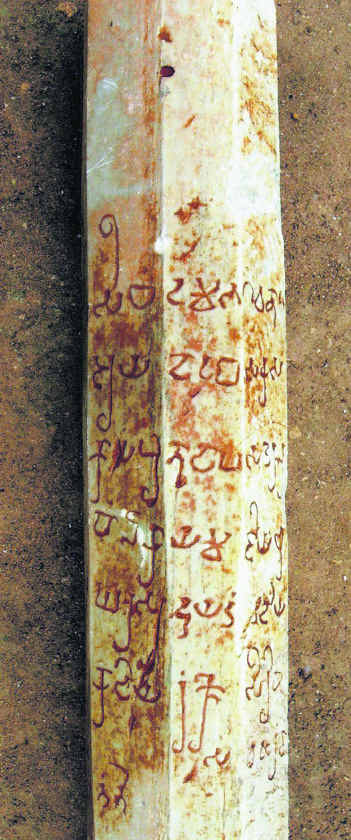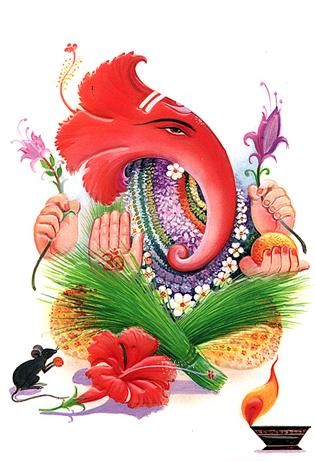New Ikshavaku inscription discovered in Krishna district
GUNTUR: A new inscribed pillar found at గుమ్మదిద్దూరు (Gummadidurru) near నందిగామ (Nandigama) in Krishna district has thrown light on some new names of geographical locations during 275 AD in the Vijayanagara kingdom.
Archaeological Survey of India's effort to revive the tourism attraction of Gummadidurru led to unearthing of a three-foot Bhrahmi lipi inscribed green limestone `Octagonal pillar' that announced the completion of 10th rignal year of Ikshavaku king Siri Yahuvala Chantamula, Archaeological Survey of India Director D. Jithendra Das told The Hindu.
Considered the most illustrious king in the Ikshavaku dynasty, Chantamula ruled the present Nalgonda, Krishna, Khammam, Guntur and Prakasam districts for 24 rignal years and during his regime several edifices of Buddha and Hindu pandians flourished.
The pillar with nine-inch diameter has a prakrit engraving in Bhrahmi lipi.
`Golden age'
"His age is considered golden age of artistic, sculptural and construction activity.
Phenomenal development was witnessed in agriculture, trade and economy," Mr. Das said.
Earlier, some pillars related to second, eighth, ninth, eleventh and sixteenth rignal years were discovered, but had been was missing for a long time.
This new pillar throws light on the name of donor of the pillar, who is interpreted as nobility hailing from present Madhira mentioned on the pillar as Madhadhakadapara, according to Assistant Superintending Archaeologist D. Kanna Babu of Amaravathi, who deciphered the prakrit writing.
The inscription read as follows:
"Success! Obeisance Dhamma and God during the 10th rignal year of Siri Yahuvala Chantamula - Ayadevabasaka the resident of Madhadhakadapara along with his wife Ijetika, sons Dapa, Theraka, Thamula, Chauka and daughters Modi, Chula Modi, Gharasudu, Hamavadi, Bhutati, Kati erected a chaitya (stupa) at Dedagiri (now known as Gummadidurru),"
Mr. Kanna Babu explained.
Courtesy: The Hindu




3 Comments:
zhengjx20160525
michael kors handbags
cheap oakley sunglasses
michael kors purses
michael kors outlet online sale
air jordan homme
tory burch outlet
cheap toms
pandora charms
oakley sunglasses wholesale
nike free uk
louis vuitton outlet
gucci outlet
coach outlet
toms wedges
coach outlet online
oakley outlet
air force 1 trainers
insanity workout
oakley vault
coach factory outlet online
nike uk
nike air max
louis vuitton bags
coach outlet
ladies cartier watches
nike trainers sale
cheap ray ban sunglasses
michael kors bags
louis vuitton handbags
louis vuitton bags
michael kors outlet clearance
designer handbags
nfl jerseys
toms wedges
gucci belts
michael kors outlet clearance
louis vuitton purses
louis vuitton outlet stores
toms outlet
coach outlet online
Thank you, for getting something new and saluting the irrationality of this story, hopefully it will be useful, so that this life is more useful and useful for others.Tips Menyembuhkan Patah Tulang Cara Mengoatasi Tumor Payudara Obat Muntaber Cara Mengatasi Sering Buang Air Kecil
birkin bag
curry shoes
golden goose
yeezy 500
golden goose outlet
palm angels hoodie
steph curry shoes
kyrie irving shoes
OFF-White
bape outlet
Post a Comment
<< Home